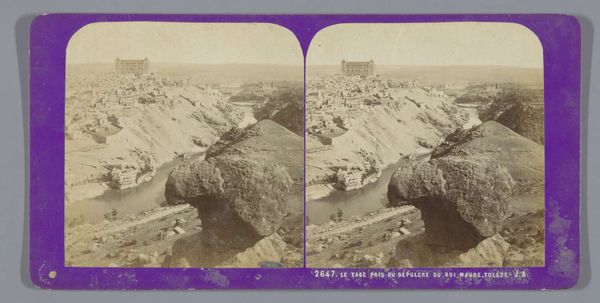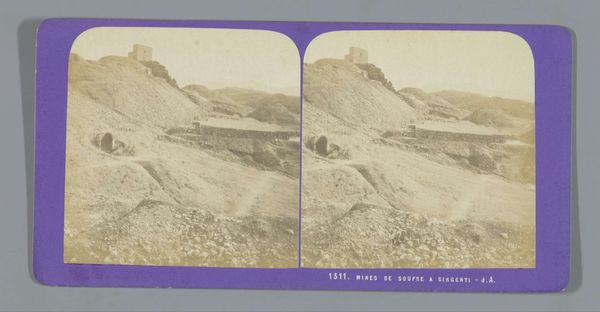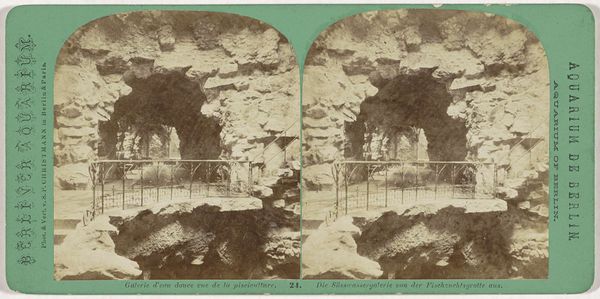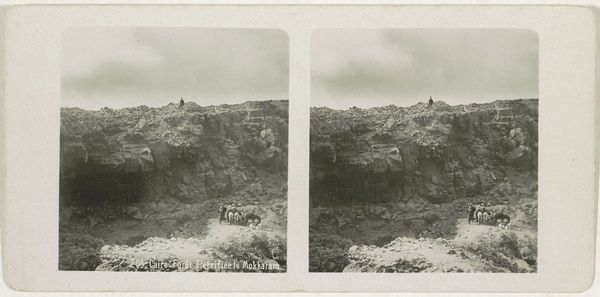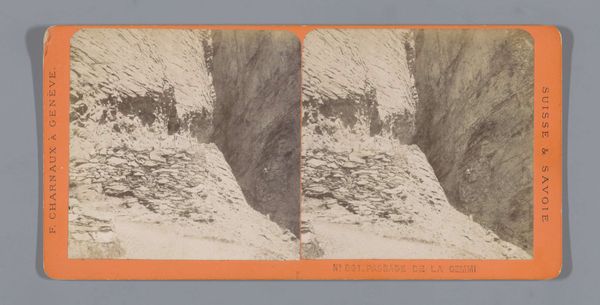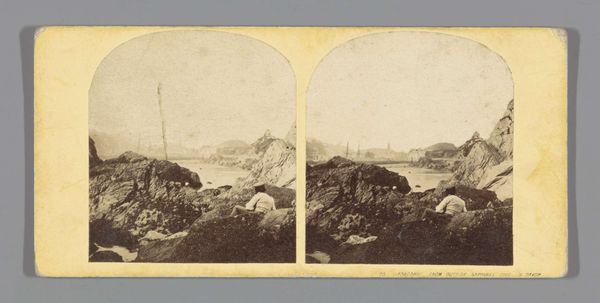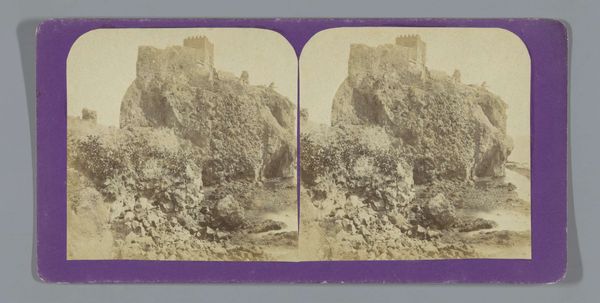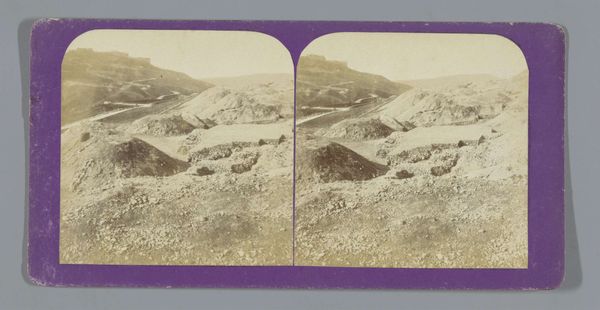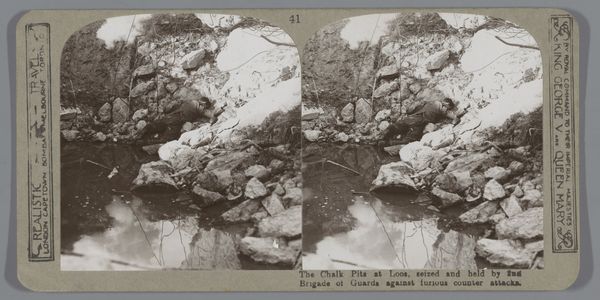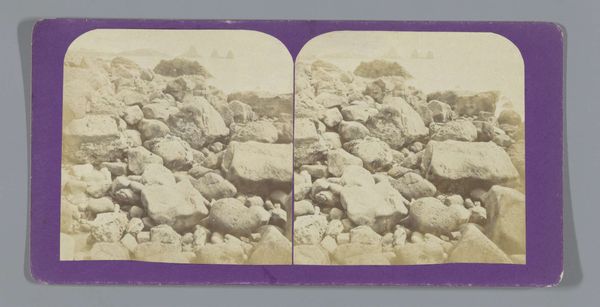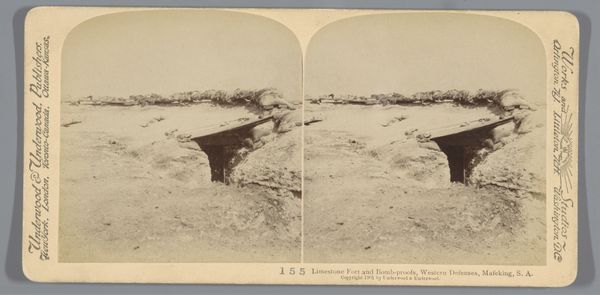
print, photography, gelatin-silver-print
# print
#
photography
#
coloured pencil
#
orientalism
#
gelatin-silver-print
#
cityscape
Dimensions: height 85 mm, width 170 mm
Copyright: Rijks Museum: Open Domain
Curator: Here we have a gelatin-silver print titled “View of the Alcázar of Toledo” by Jean Andrieu, dating from 1862 to 1876. What are your first thoughts? Editor: It’s… monolithic. The fortress dominates, but the barren landscape somehow steals the scene with its intricate play of light and shadow. It exudes this palpable sense of solitude and permanence. Curator: Indeed, that interplay is critical. Observe how the composition establishes a distinct foreground, middle ground, and background, each rendered with subtle tonal variations. Note the rough texture of the rocks contrasting sharply with the fortress’s ordered facade. Editor: That fortress... Alcázar has powerful connotations. Royal power, military might... it all concentrates into this visual symbol. Did Andrieu deliberately choose this viewpoint to amplify those themes? Curator: Quite possibly. Consider that in Orientalist art, architectural monuments are often imbued with symbolic value to evoke a sense of history and grandeur. The photograph also features, minimally, the presence of the locals that are overshadowed. Editor: Right. Beyond its historical function, the fortress may also speak to larger cultural attitudes and biases related to power, control, and perception of space. Curator: Exactly. This composition utilizes depth and spatial relationships to subtly reinforce pre-existing notions of societal hierarchies, placing an emphasis on structure. The vertical lines draw our eye upwards. Editor: But the ruins and crevices around it feel almost untouched. It creates an interesting tension: The man-made fortress rising rigidly above the uneven nature. Is that part of its power? The sheer, blunt statement of human will made manifest? Curator: I agree entirely. And the very process of rendering reality through the chemical processes of early photography further complicates our relationship with what is shown. Editor: It all works to shape a certain view and understanding... food for thought, for sure! Curator: Precisely. A testament to how closely interconnected are visual representation and our perceptions of historical narratives and symbolic understanding.
Comments
No comments
Be the first to comment and join the conversation on the ultimate creative platform.
